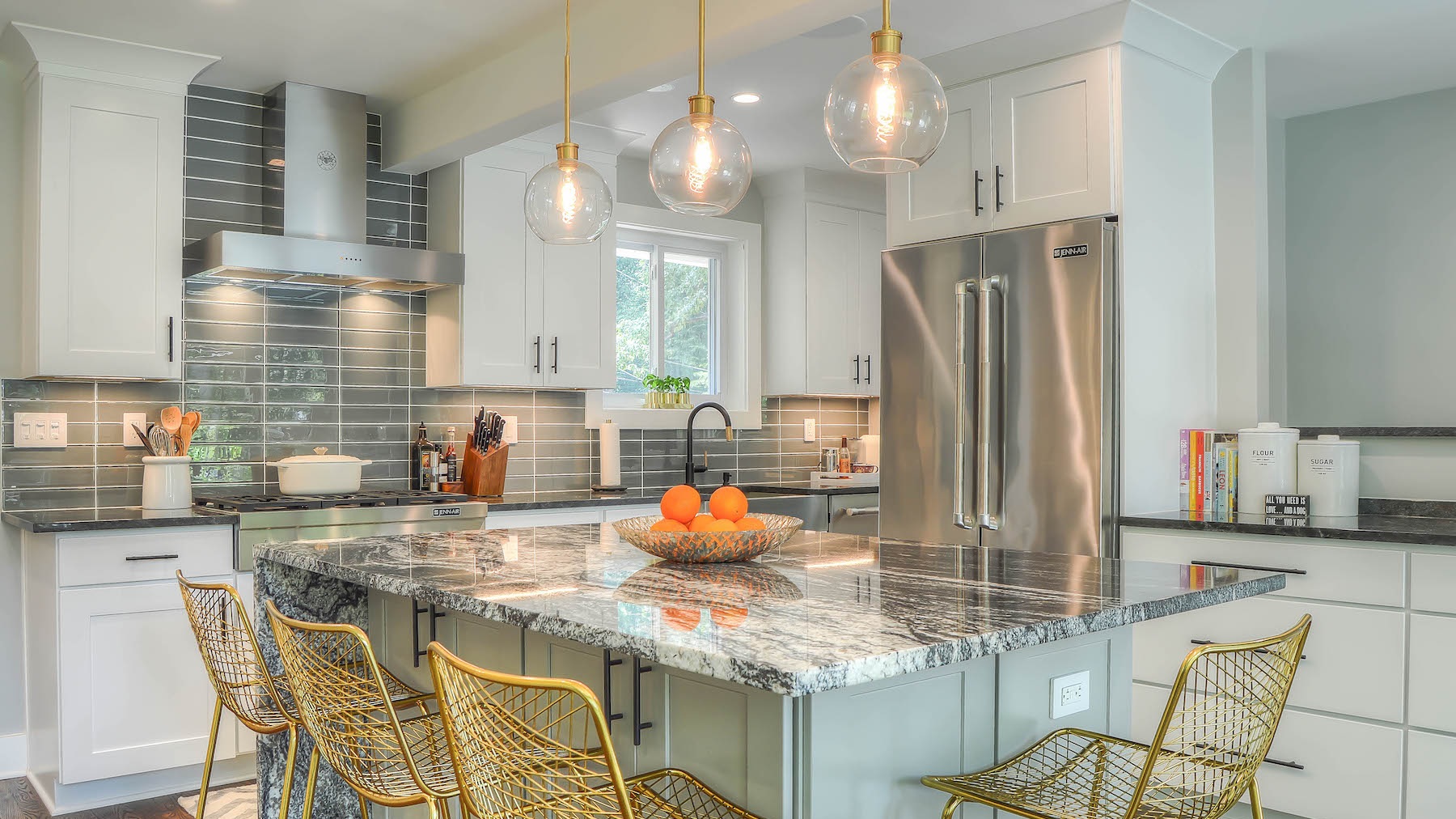We can probably all agree that it’s pretty ideal to buy fixtures and hardware in complete sets. And while there’s a sense of organization and completeness to cabinetry, lighting fixtures, appliances and drawer pulls that all sport similar finishes, you may just be missing out on the best elements of your room’s overall design and look.
In fact, I have seen a lot of layering of various finishes, textures and eye-catching surprises everywhere in the design world this past year. The best part is that this increasingly popular design strategy works well in any type of space, large or small.
Metals, for example, are available in a wide variety, from brushed nickel, oil-rubbed bronze and brushed gold to polished chrome, brushed black, polished brass, antique bronze and many more. Mixing these various metals is the perfect approach to adding depth to a space and visual interest. I love eclectic, textured, layered spaces – and mixing finishes or metals is an easy way to make the unique pieces in your home stand out, create personality and dimension.
The key to mixing is to ensure you’re mixing finishes the right way, so your space does not become overbearing or overly mismatched.
Mixing Finishes: Do’s and Don’ts
When it comes to determining which finishes, metals or textures can bring a room together, there is definitely a method to the madness. Here are some DO’s and DON’Ts when considering mixing:
DO:
Consider Mixed Materials
Let’s say you like wood, but you also like metal. Why should you have to choose one or the other? Mixed materials can tie together an overall look in your room, insert an element of coziness into a more updated room, or even add a punch of modern to a traditional space. The art of mixing materials also lends itself to a blending of eras and styles.
Think About Your Color Scheme
Generally speaking, I encourage clients to use warm metals – think copper, gold or –with warm hues, such as browns, reds or shades of yellow. I also recommend cool metals like silver and chrome with cooler-toned hues like green, blue and purple. In fact, most neutral rooms beg for some type of metallic accent in order to add elements of texture, warmth, dimension and color.
Pick a Dominant Finish
If you want to mix finishes, similar to mixing colors in a color palette, I believe it’s best to select a dominant tone and a secondary tone to give the room visual structure. Pick a finish you love to be the most noticeable in your space, then opt for one or two additional metal accents to finish the look. You can also use this method in smaller rooms, but I suggest playing it safe by picking only two tones to prevent an overly-cluttered look.
Keep Things Subtle, Yet Interesting
Be sure your finishes are not competing for attention. The best way to mix finishes seamlessly is to divide them into categories. Consider separating the items into decorative versus functional and giving one finish to each. This strategy works particularly well in bathrooms and kitchens.
For instance, in a kitchen, functional hardware like faucets and cabinet pulls can be one tone and decorative lighting might be another. In the bathroom, consider selecting one finish for your faucets and shower fixtures and add the other accents – think lighting, handles and mirrors – in a different finish.
DON’T:
Disregard Textures
Have I told you how much I love textures? Texture can make a genuine difference in a space with mixed finishes. In fact, I often encourage clients to think outside the box and consider combining polished, matte or hammered finishes to create a rich, inviting space. This effect can also apply to mixing wood tones in a kitchen with, for instance, white cabinetry or even an added pop of color.
Be Afraid to Mix Cool and Warm Tones
Warm metals such as gold or brass can offer a vibrant pop of color when you place them with cool metals like chrome or silver. Sometimes, homeowners assume that matching finishes is the smartest way to coordinate their bathroom or kitchen, but in many cases, that approach can create a less interesting, almost monochromatic and look.
Go Overboard
It’s okay to mix finishes but try not to go too crazy. I suggest sticking with two finishes to play it safe. There’s always a potential for three if you have a special statement piece of some type, or if the finishes are spread across a significant space, but generally, two finishes work best – an accent tone and a prominent tone.
Are You Ready to Break the Rules and Get Mixing?
Gone are the days when every item in a room all matches perfectly. We now know that mixing materials, colors and textures can elevate a space’s style and create a fresh, inviting effect.
Are you ready to start mixing? Let’s set-up a time to talk – I’d love to help provide you with further inspiration on how to strategically mix finishes to create your very own dream space.







